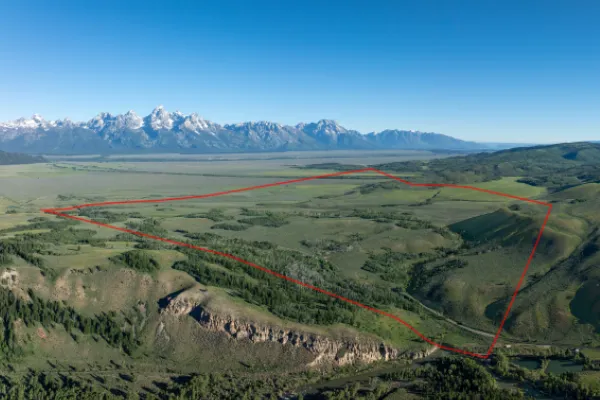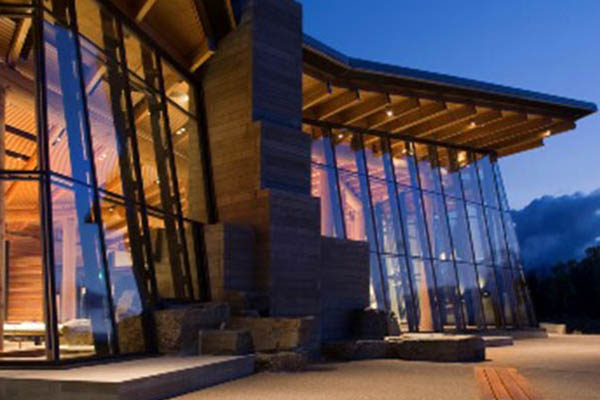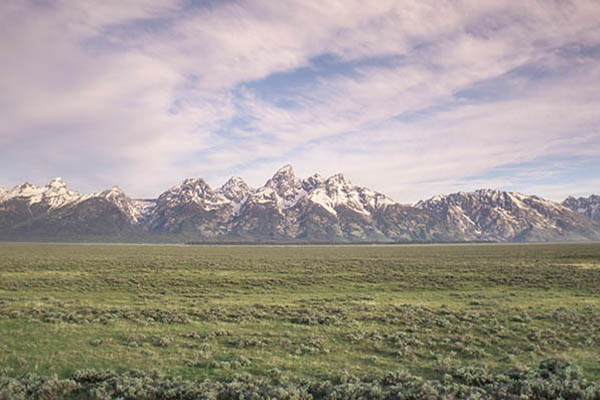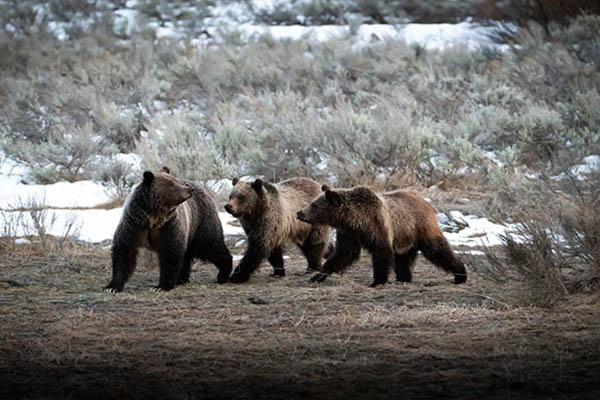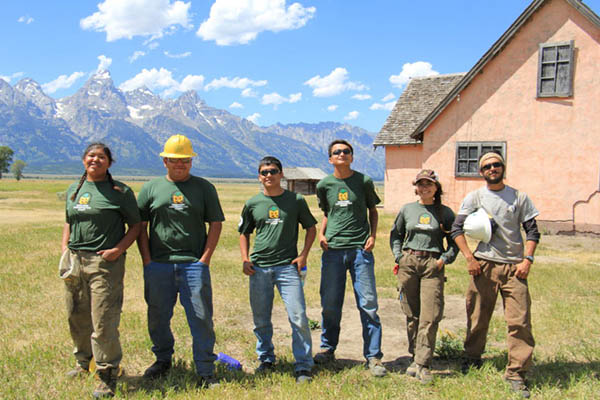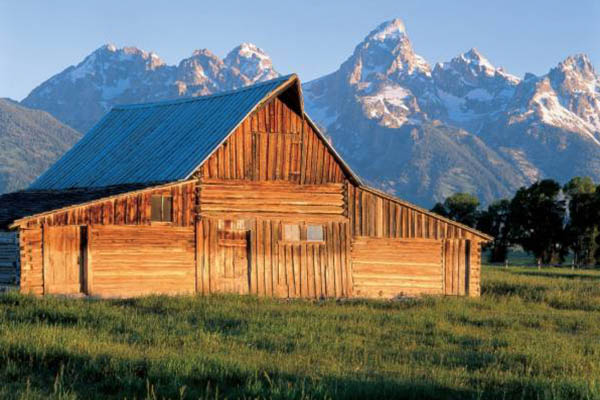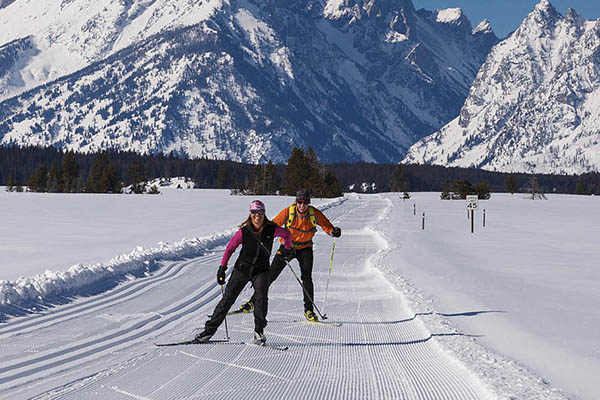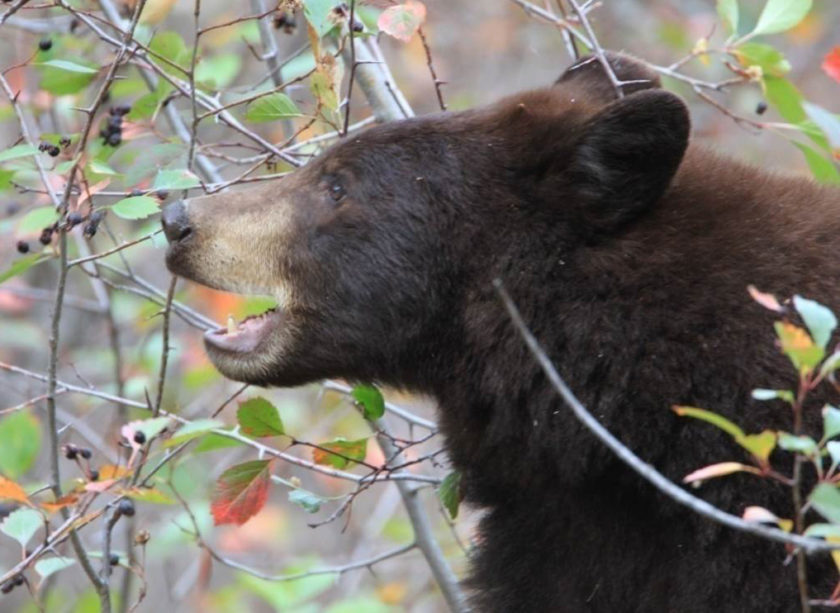August is a busy month for wildlife in the park as bears are foraging, elk and bison are preparing for the rut, and eagles are fledging.
• By the end of August, many berry crops, particularly huckleberries, are on their way out while others, like mountain ash, hawthorne, and chokecherry fruits, are just ripening. Bears will take advantage of these as other foods wane. Bears that forage on mountain ash berries will leave scats that look like berry pie filling on some trails. This is because the fruits have little digestible biomass, leaving them looking much the same after passing through a bear.
• Along the Moose-Wilson Road where hawthorne and chokecherry are abundant, black and grizzly bears often forage close to the road from August through October.
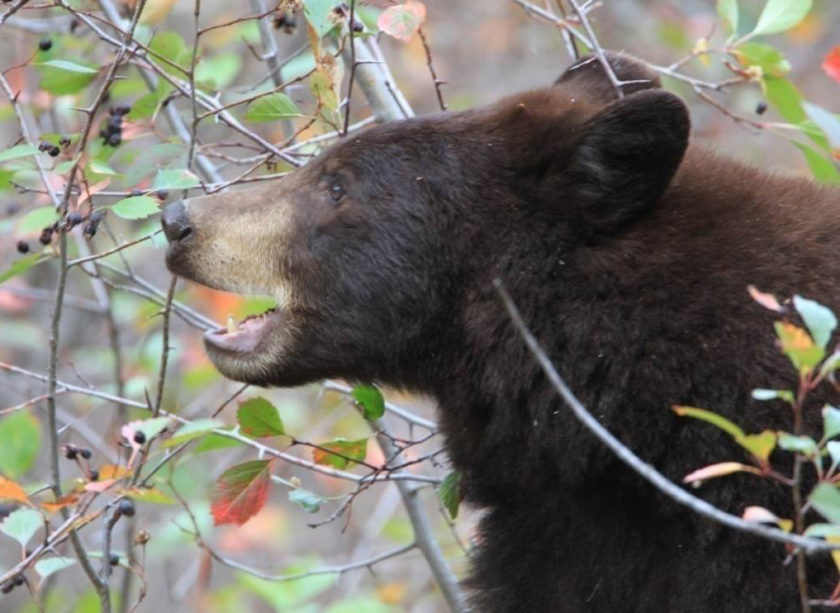
A black bear feeding on hawthorne berries. Photo courtesy of P. Potter.
• Bear foraging on whitebark pine (WBP) cone seeds begins in August and will last until the end of September. Interagency Grizzly Bear Study team scientists report that 2016 is an above average year for WBP cone abundance. WBP seeds rank among the most nutritious of bear foods in the ecosystem. Most bears find seeds harvested and stored on the ground in red squirrel middens. Bears will also access cones by pulling down branches (grizzly bears) or by climbing the trees (black and some grizzly bears). Hikers need to watch out for bears and exercise caution in the WBP zone this time of year—around 8,500 to 10,000 feet elevation in the Tetons.
• Establishment of non-native mountain goats in the park remains an important concern. Recent estimates of 40 to 60 goats roaming in the Tetons are more than double what it was a year ago. While magnificent animals, mountain goats could wreak havoc on the park’s fragile alpine and subalpine ecosystem. This is because the plants in these places did not evolve in the presence of goat herbivory. Park managers are following this issue closely—they are in the process of gathering more information on goat movements and population dynamics, and are preparing a mountain goat management plan that will include options for removing animals from the park.
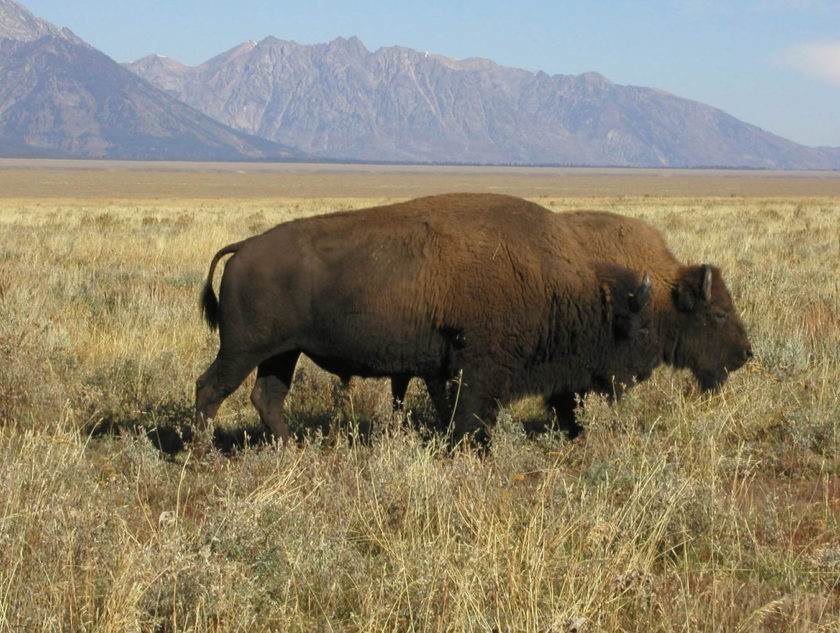
Bull and cow bison during the rut.
• The bison breeding period, or rut, began in July and is now rapidly waning, while the rutting season for elk is just beginning. Both bison and elk are polygynous breeders—a small number of dominant males breed with large numbers of females. Dominance in males is determined by a combination of display, vocalization, and ritualized fighting that can result in severe injuries to one or both contestants. Bull elk maintain and defend breeding rights to harems of cow elk. Bull bison seek out and compete for breeding rights to individual cows as they become receptive.
• Bald eagle nestlings (uniformly very dark brown to black) have all fledged and can be seen along waterways begging for food from their parents and working on flying skills, particularly landings. They will not get a white head and tail adult plumage for another four to five years when they become sexually mature.
• Park fish biologists continued to document new sucker spawning sites this summer as part of their long-term native fish conservation program.
• The flow in some park streams approached or went below 25th percentile flows in August, with some setting new records for low flows. The low flows combined with high afternoon ambient temperatures caused water temperatures to hit alarming temperatures for cutthroat trout health, breaching the 20 degree Celsius (68 degrees Fahrenheit) mark on occasion. Park biologists will continue to monitor these situations carefully, particularly as they pertain to trout conservation and best management practices.
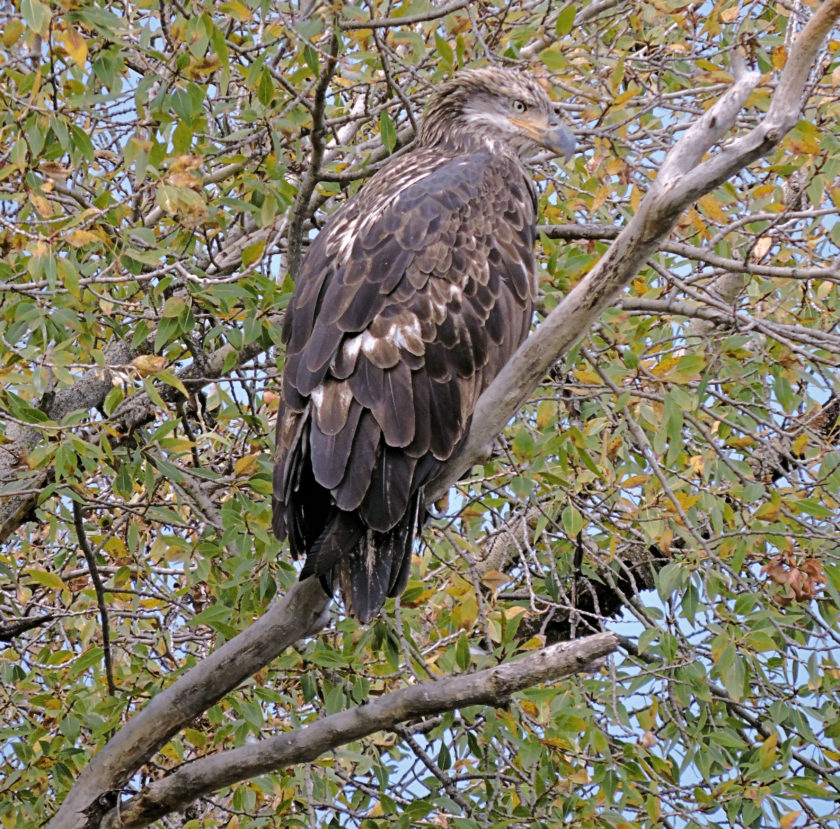
A fledgling bald eagle. Photo courtesy of Tim Griffith.

